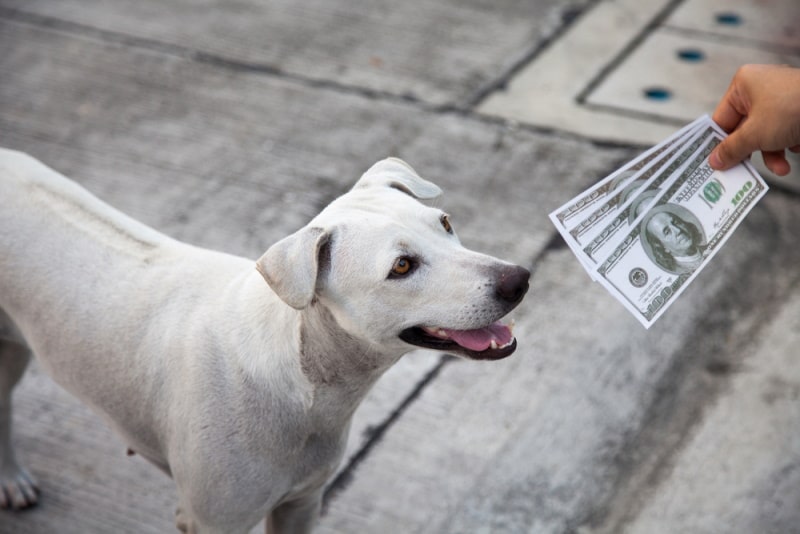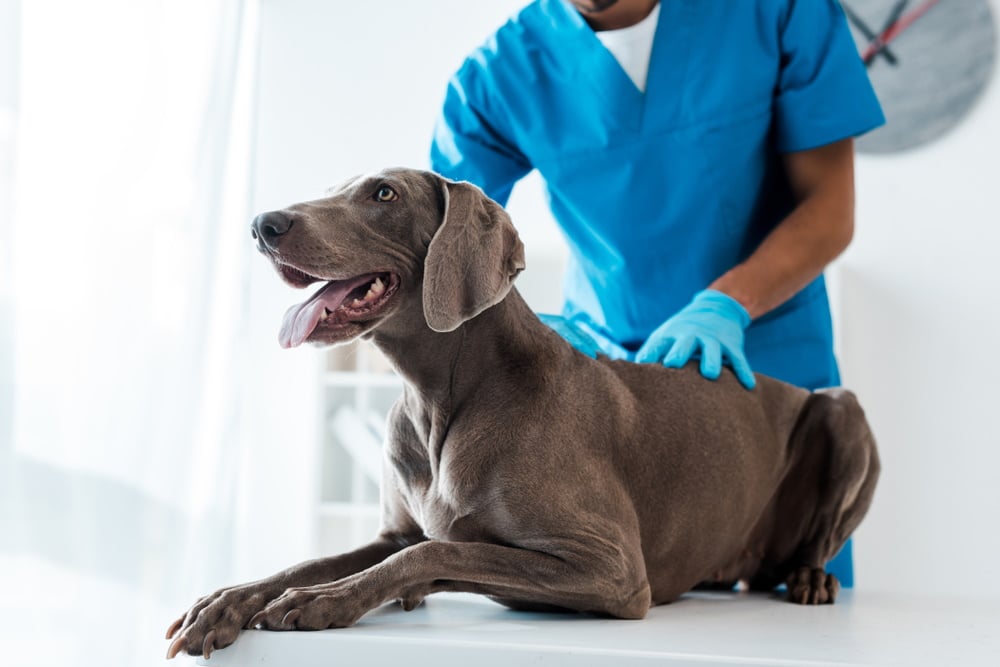When Linda McMillian moved to Hartford, Connecticut, just out of college, her first stop was to adopt Lucy, a mixed-breed dog.
“Aside from Lucy, all I knew were coworkers. She filled such a void,” says McMillian.
When the dog slipped out of her leash one morning and was hit by a car, McMillian knew she’d do everything possible for her friend.
“She needed surgery to reset her leg, several stiches, some dental work, and pain meds. I drained what little savings I had, then used credit,” says McMillian. “I don’t regret it. I couldn’t say no.”
Most pet owners will do anything for their dogs and cats. Today’s advances in veterinary medicine mean that treatments, diagnostic tests, and medication can often reverse the most difficult cases. But it all comes with a price.
What would you do if a veterinary emergency arose? Here are six ways other pet owners have managed the unexpected.

1. Explore financing options
When Linda McGrath-Cruz’s dog, Juba, showed signs of back trouble, the vet suggested diagnostic tests, requiring an overnight stay, to rule out a potentially serious problem.
“The total bill was $3424.17. I was able to finance it using Care Credit, [which offers] 12 months no interest,” McGrath-Cruz says. By carefully planning out her monthly payments, she paid the balance in full before the card’s interest-free period expired.
McGrath-Cruz is grateful the card enabled her to pinpoint Juba’s problems, which was thankfully a harmless spinal cyst, not the more serious issue anticipated.
Explore financing options. Be sure to review the details of the agreement carefully, and be realistic about your ability to pay off the balance before interest accumulates.
2. Negotiate a payment plan
Gayle Carson, of Miami Beach, Florida, has been loyal to the same veterinary hospital for years, and has found them willing to work out payment plans when bills become steep.
“Currently I have one dog and two cats. However, when my kids were around, we had five dogs and three cats, all loved and cared for,” says Carson.
“[Payments have been] as low as $150 per month and as high as $350,” she says. “I just had one of my cats in and the bill was $1,000. I paid half and am going to pay the other half this month,” she reports.
Even if you’re not an established customer, your vet may agree to a reasonable payment plan. For the best success, make an initial deposit, then establish a monthly rate, and the date on which you’ll provide it.
3. Get pet insurance
When his French Bulldog puppy, Charlie, took a 35-foot fall onto a parking lot below, Sandon Hansen rushed to vet, where Charlie’s needs were extensive.
“The nurses kept repeating how much it was going to cost, almost maniacally, as if there was an option. It was nice to be able to stop them in their tracks,” said Hansen. Because he had pet insurance, he was able to focus on helping his dog, rather than paying the bill.
“Trupanion insurance pre-authorized and paid 90 percent of our bills, which came to approximately $7,000,” said Hansen. Almost a year later, the happy dog shows little signs of his trauma.
Pet insurance can be a lifesaver, particularly when an expensive procedure or illness hits. Most companies offer varying levels of coverage, so shop around to see what fits your budget and needs.

4. Ask detailed questions about the treatment
When Lindsay Stordahl’s dog, Ace, fell ill one weekend, a trip to the costly emergency vet was their only option. After tests and an overnight stay, Ace was on the road to recovery, but Stordahl was facing a bill of $1,800.
“At the time, I was very emotional and agreed to everything on their initial estimate. I’m glad they saved my dog’s life, but I also know that every single one of the tests and procedures was not absolutely necessary,” she reflects.
“Don’t just accept or reject (their estimate) as a whole,” she suggests. “Ask what each test will tell you.”
Provided your pet’s situation isn’t time-sensitive, take time to look over the services, ask questions, and do research on your own, if possible.
5. Keep a slush fund
George Adams has always owned dogs and cats, and knows that unexpected expenses can leave you facing tough decisions. But with two young children devoted to their furry siblings, he wanted to be prepared for anything, so he devised a unique solution: an animal savings account.
“Each month, I put a set percentage into our pet fund,” he says. “I’ll tap into it for their checkups or unexpected expenses.”
Adams says he’s been lucky enough that a major veterinary bill has not arisen, but knowing there’s a nest egg to turn to has given him peace of mind.

6. Turn to crowdfunding
Chunk was an active and happy English Bulldog who loved to play at the beach with owner Georgina Johnson. But one day, Chunk began bleeding, and they rushed to the vet, where they diagnosed him with a severe prolapsed urethra, requiring surgery costing $1,200.
On a tight budget, the Johnsons launched a crowdfunding campaign on gofundme.com, and shared the link to it on Facebook and some English Bulldog forums.
“I set it up Tuesday night. By Friday, we had all the money we needed plus $50 extra,” says Johnson, who scheduled Chunk’s surgery within days. “The outpouring of love and responses was amazing.”
Online crowdfunding sites have become an increasingly popular, enabling family, friends and Good Samaritans to donate toward a cause. Read the fine print of any site you sign with and be sure you understand any fees involved.
Most of the time, our furry family members ask little more of us than the toss of a tennis ball or a warm lap. But veterinary situations arise, and the best time to establish a plan is while your pet is happy and healthy.
How would your family manage a steep veterinary expense? Tell us your plan in the comments.
Learn more about dogs with Dogster:
- The 10 Biggest Misconceptions About Guide Dogs for the Blind
- 6 Things to Remember When You Have a Fearful Dog
- Four Things You Should Know About Your Dog’s Growl
Featured Image Credit: LightField Studios, Shutterstock











